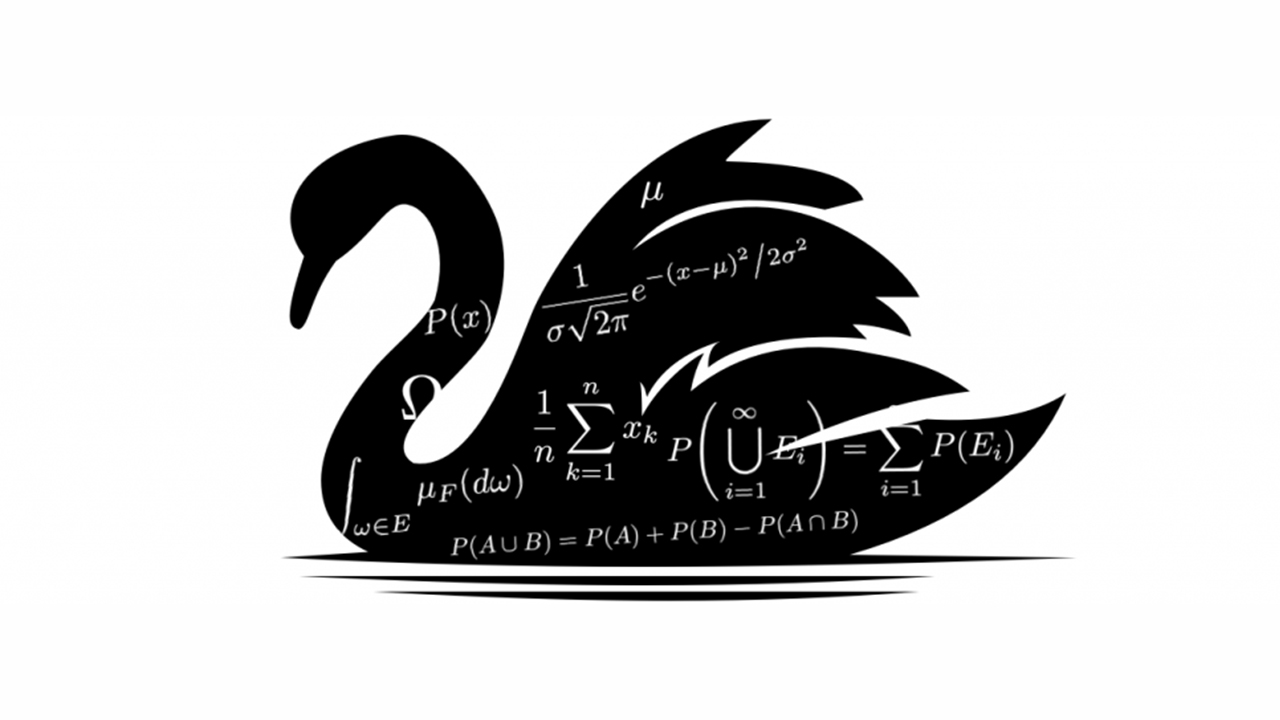
Black Swans
10 min read
The World Bank slashed its global growth forecast on Tuesday this week, sending out warning signals that many countries could fall into recession. In fact, some pundits predict that the economy we have today may very well slip into a period of stagflation mirroring the dark times in the ‘70s, a time that the older generation might find hauntingly familiar.
Global economic expansion is expected to drop to 2.9% this year, from 5.7% in 2021. This is 1.2 percentage points lower than the 4.1% predicted in January. Growth is expected to hover around that level in the next two years, while inflation remains adamantly high, above targets in most economies. All these bleak forecasts are causing many of us to wonder, are these possible signals pointing to a future black swan in the making? Are we desperately seeking clues to prepare ourselves for an economic catastrophe that could very well obliterate what we have today? Such thoughts are daunting, but it’s certainly worth considering.
What is a black swan event?
Nassim Nicholas Taleb coined the term ‘black swan’ with respect to economic, political or social events that are inevitable and impossible to predict. It is produced when the gap between what we know and what we think we know becomes dangerously wide. The former Wall Street trader and author of ‘The Black Swan: The impact of the Highly Improbable’ popularised the concept in 2007, indicating the three key criteria required for an event to qualify as a black swan:
1. It should be unexpected for the observer.
2. It carries extreme, large-scale impacts.
3. Human nature makes us concoct explanations for its occurrence, after the fact, making it appear explainable and predictable.

Essentially, black swan events are “unknown unknowns” which, despite all plans and precautions that might have been made, still take observers by surprise and lead to catastrophic consequences. Hence, not all crises constitute black swans, and in the same vein, not all black swans are crises. In fact, Taleb does consider prolific scientific discoveries such as the emergence of personal computers, and the Internet as black swan events as well.
Some of history’s black swans
There are a number of black swan events that have taken the world by surprise.
The “Dotcom” Crash
The Dotcom crash was triggered by the rise and fall of technology stocks. Once again, in retrospect, we could see that the growth of the Internet was creating a buzz among investors who were then way too quick to pour money into startup companies without sufficient thought or due diligence. This caused the shares of companies promising to integrate the then novel internet tech to skyrocket in value. However, many of the business models proved to be ineffective, triggering a wave of bankruptcies which resulted in an eventual loss of about $5 trillion.
9/11 Attacks
The attacks that day seemed conceivable in hindsight by many analysts as they studied one of the most tragic days in modern times. Terrorists had hijacked civilian planes with passengers onboard and flew straight into the twin towers of the World Trade Center in New York. The loss of lives that day was catastrophic, with 2900 fatal casualties. The fact that many ended up declaring that the events of that day could have been anticipated constitutes the event to be a black swan. But in all honesty, could we really have prevented it?
The 2008 Global Financial Crisis
This crisis that hit us hard on a global scale started with the US financial crisis in 2007-2008. Many pundits claimed that the crisis was actually years in the making and signs of years-long binge on cheap credit were speckled across financial markets all around the world. Sloppy lending standards were also feeding the housing bubble for many years before the crisis. When the bubble burst, financial institutions were left holding trillions of dollars’ worth of investments in subprime mortgages that became near to nothing at the time.

The economic downturn was so severe that the Lehman Brothers investment bank filed the largest bankruptcy procedure in history, with unemployment hitting 10% and about 3.8 million Americans losing their homes to foreclosure. The impact of the crisis also affected world stock markets, which then lost about $10 trillion.
All these events were always ‘predictable’ in retrospect, but of course, clearly no one was able to avoid them, or even manage the consequences that followed. Such is the conundrum of black swan events.
The 3 main fallacies
There is a large interest towards black swans in the financial sector. Taleb has concluded that we cannot prevent black swans, and this is an important aspect to note, as it actually contributes to the overall systemic risk in the market. Many researchers out there have tried to find out how black swans affect market prices and if there are any ways to protect against them. But looking back at the definition, it is apparent that we probably could not avoid them. Hence, Taleb reckons we should stop using resources to identify black swans for preventing them. Rather, we ought to concentrate on minimising their effects, as seen from his interview where he told the audience: “My whole idea of the black swan is to stop looking for black swans and [to start] analys[ing] the fragility and robustness of [our]systems.”
So what exactly are the main fallacies that prevent us from seeing these events coming?
First, confirmation bias. We tend to concentrate our attention on information that is prevalent to us, and neglect opinions that contradict our take on the situation. Second, there is the tendency to overuse mathematical methods in the course of predicting markets. Due to the nature of forecasting, theories and formulas are often put in place to generate seemingly more concrete data to affirm ourselves. In practice, everything is simply more complicated, with factors we do not know about. What often makes things worse is the very fact that we are unaware of what we do not know. The third main fallacy is the overemphasis on retrospective analysis. By retrospecting, we end up concentrating excessively on the well-defined sources of uncertainty that we overlooked prior to the black swan events that have already taken place, in turn missing out possible telltale signs of upcoming black swans which then become even harder to discover.

How can investors prepare for black swans?
As we attain globalisation after decades of pursuit, the implications of black swan events become even more daunting as we become more connected to each other. Some have termed the recent pandemic as a black swan event but certainly not Taleb, who has expressed slight indignation at the opinion. He has commented that the black swan event is not merely a cliche for anything bad that surprises us. In fact, the pandemic was wholly predictable, by Taleb himself, Bill Gates, Laurie Garrett and others. The black swan event is instead meant to explain why, in a networked world, we need to change businesses practices and social norms in order to feel less of the impacts and to protect ourselves against the eventual inevitable. So here’s how:
According to Taleb, the best way to soften the blow is not to try to predict it. Rather, it is to understand the inevitability and develop stable and sustainable plans that will help reduce the likelihood of such an event or at least to smooth over its consequences. Organisations like banks can run stress tests to prepare themselves for any potential catastrophes. How about us?
First, it is important for individuals like us to be able to acknowledge that the next black swan is bound to come. Therefore, we ought to accept accidents as a normal cycle of life so it does not catch us by too big a surprise.
In the case of a black swan event, we need to stay calm and try our best to take advantage of the opportunities that the black swans may provide. When the stock market crashes and stock prices decline, it is certainly worth considering the investment of sustainable companies that will be able to push through the crisis and rise in value again. Let’s take a look at the case of Jamie Dimon, who is the epitome of an individual who managed to take advantage of the opportunities of the 2008 global financial crisis, while others were frantically picking up the pieces. At the height of the crisis, Dimon used JP Morgan’s strong bank reserves to acquire Bear Stearns and Washington Mutual, which were two financial institutions caught up in the mess of housing bubbles and toxic mortgage-backed securities during the time. JP Morgan acquired Bear Stearns for $10 a share, roughly 15% of its value from early March 2008. In September of the same year, it also acquired Washington Mutual (WaMu). The purchase price was also merely a fraction of WaMu’s value earlier that year. Subsequently, shares of JP Morgan flourished and Dimon was considered one of “The TopGun CEOs” by Brendan Wood International.

Finally, the key to investment would be to diversify your portfolio using fundamentally different instruments with as little correlation to each other as possible. Certain sectors have faster recovery time than others, and that could make a difference for you in the case where a recession ensues after a black swan event. Once again, we have hedge fund manager John Paulson being an exemplar at hedging. During the very same credit crisis, Paulson made a timely bet against the US housing market, which put him to fame. But more importantly, he made a number of investments in different entities, including a multi-billion dollar position in Bank of America and an estimated $100 million position on Goldman Sachs. He also had positions in gold and was heavily invested in CitiGroup, JP Morgan Chase and several other financial institutions. Hedging was indeed his key to success, while most of the world was caught in the mayhem of the black swan.
That being said, all that is certainly easier said than done and we can’t all be Dimons or Paulsons. We can only be as prepared as possible and brace ourselves for the uncertain future ahead.
A Trader’s View
Historically, black swan events in the forex market have always been caused by unnecessary monetary policies, such as the pegging of currencies or maintaining fixed exchange rates. One such catastrophe took place in 2015 when the Swiss Franc unpegged from the Euro Dollar and caused the entire forex market to freeze during trading hours. This resulted in a spread that reached a record of 1000 pips. While it is impossible to avoid black swan events, we can actually limit the damages of black swan events with prudent risk management.
USD/JPY
For the months of June and July, we are expecting USD/JPY to continue strengthening and reach 140 before the Bank of Japan (BOJ) steps in to intervene in the exchange rate. The Fed is looking to raise rates with many Fed members voting for a faster rate hike. The US government has also claimed that it will “do whatever it takes” to bring down inflation, which is currently hawkish for USD. Meanwhile, the BOJ will implement “powerful monetary easing” and keep interest rates at the current level despite facing inflation above BOJ target of 2%. This difference in monetary policy caused the USDJPY to soar above 20-year high.

This month’s market insights will be solely based on the fundamental view of USD/JPY as the currency pair is rallying and breaking new highs in decades as we speak. Everyone knows about “Buy Low Sell High”, but USD/JPY would be going against your instincts as it requires you to “Buy high Sell Higher”. The nearest resistance zone is the 2002 February high of 135 ~ 135.50, where we believe that it would rally past before testing the 1998 high of 141~144 resistance zone. But of course, we will be using indicators on a smaller time frame to assist us in finding a trade setup and discounted price before entering Buy trade on USD/JPY.

















